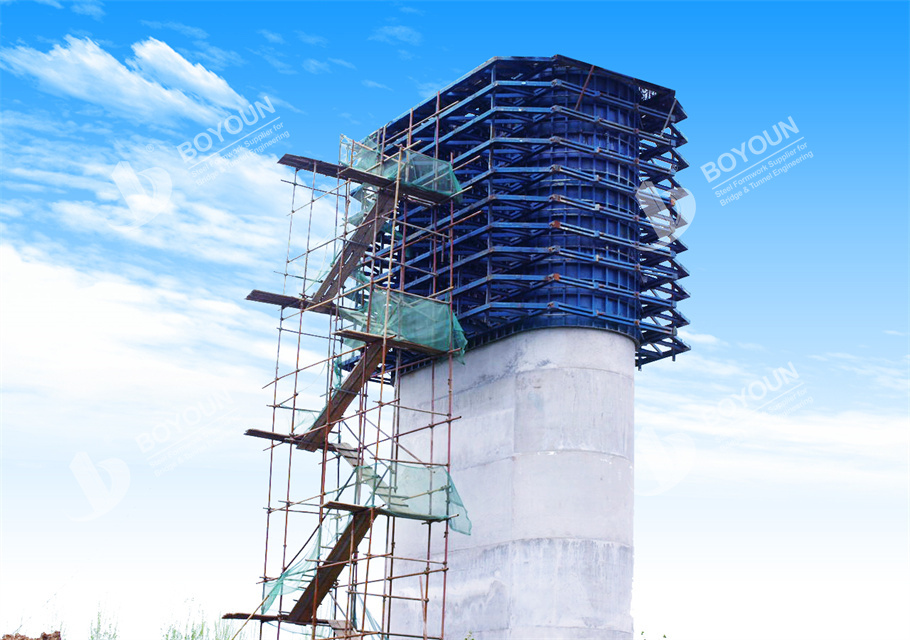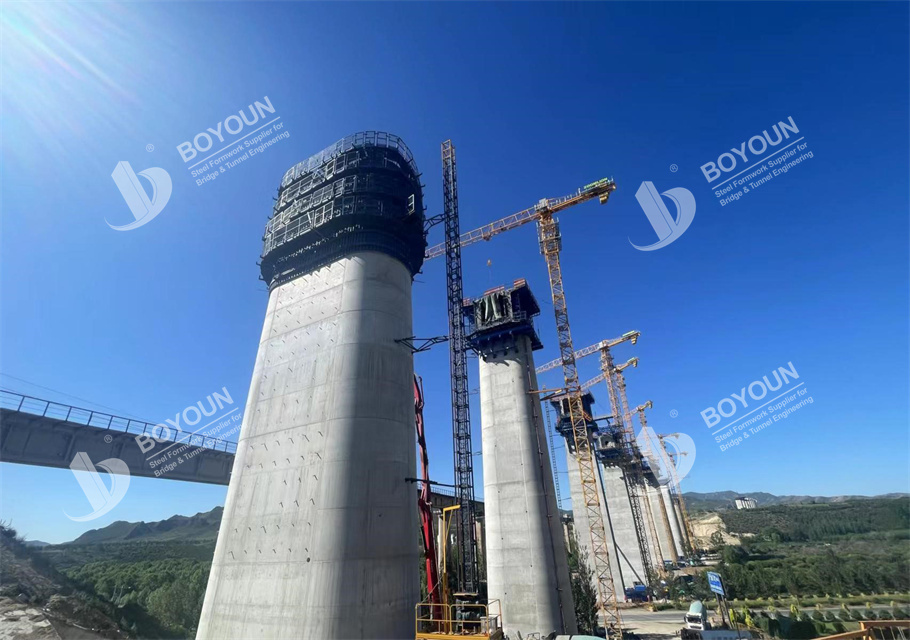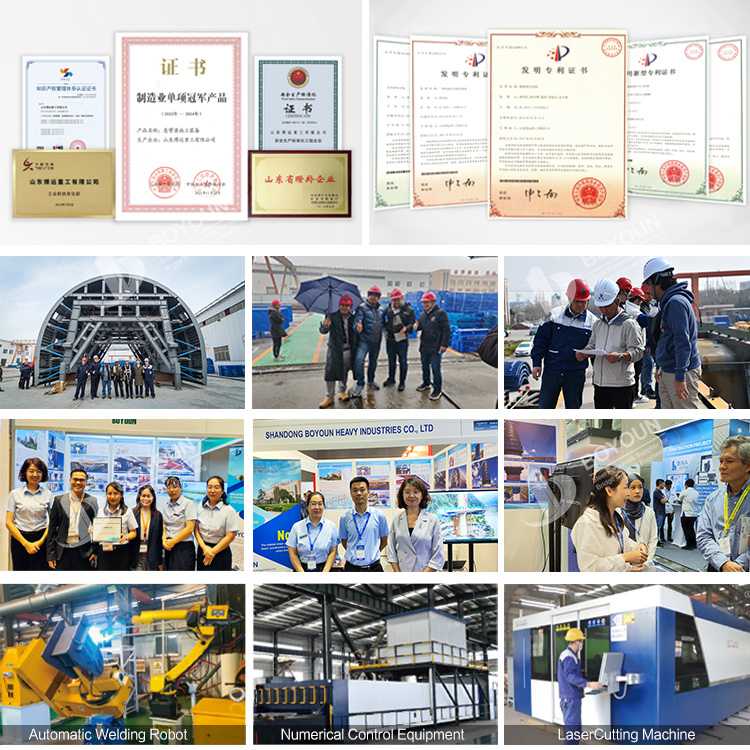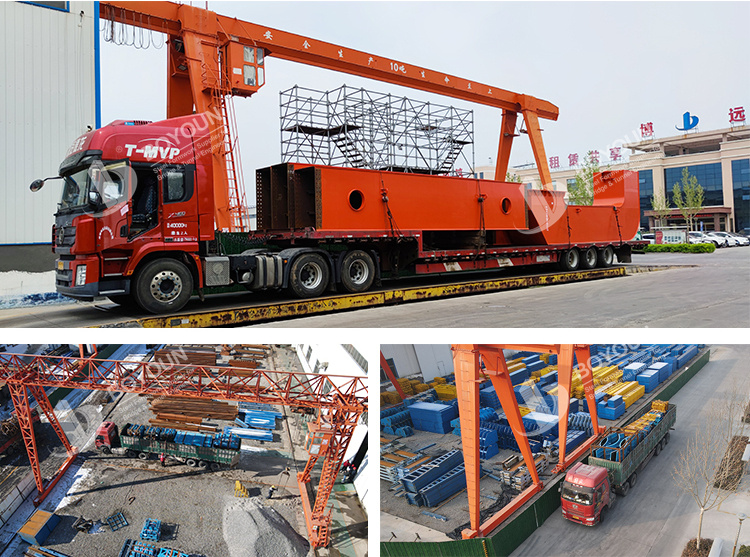Crcular solid pier formwork is a structural form of a concrete bridge pier with a circular cross-section. There are no cavities in the pier body and it is made of solid materials.
Scope of application: Solid piers are suitable for areas with frequent earthquakes, high load requirements and severe environmental corrosion. In addition, solid piers also have good applicability for large bridges spanning deep valleys, large rivers, etc.

Features
High strength: Solid construction optimizes the pier's capacity and seismic resistance.
Good stability: Conical design bolsters the pier's stability, facilitating load dispersion and external force resistance.
Simplified construction: The straightforward production and deployment of a round-ended solid pier facilitates swift installation.
1. Stagnant or waterless environment: In such environments, the efficacy of circular solid pier column templates is remarkably high. They proffer steady and uniform support, assuring bridge safety and stability. These bridge piers are typically found at the peripheries of reservoirs, lakes, and rivers.
2. High oblique angle streamflow: When stream direction is appreciably skewed from the bridge's normal line, resistance to erosion of circular solid pier columns significantly surpasses other types of piers. They effectively combat the impact and abrasion from stream flow, ensuring long-term stability of the bridge piers.
3. Mountainous bridges: Throughout mountainous bridge construction complicated by diverse topography, the circular solid pier column template has remarkable adaptability and resiliency against deformation. It diminishes the impact of natural phenomena like earthquakes and landslides on bridges, thereby enhancing their earthquake resistance.

For more case information ↑
1. Stable stress performance: The circular solid pier formwork features robust stress performance, effectively distributing the load of the bridge superstructure for improved overall capacity.
2. Strong scour resistance: The arc design of the circular solid pier formwork mitigates water flow abrasion on the bridge abutment, enhancing its durability.
3. Moderate construction: The construction process of the round solid pier formwork is straightforward, reducing construction complexity and costs. Simplicity of design also facilitates maintenance.
4. Varied adaptability: The round solid pier formwork exhibits varied adaptability, adapting to diverse terrain, climate, and environmental conditions. For example, in earthquake-prone areas, circular solid pier columns enhance the bridge's seismic resilience.
5. Good economic benefits: Compared to alternative pier types, the circular solid pier formwork offers cost-effective avenues in materials, manpower, and construction duration.


1. What are the stress characteristics of circular solid piers?
The force-bearing characteristics of circular solid piers include large vertical bearing capacity, strong bending resistance, and good stability.
2. What are the construction methods for circular solid piers?
There are many construction methods for circular solid piers. Common construction methods include conventional pouring method, prefabricated assembly method and slip form construction method.

International Department: Room 2211-2212, Tower C of Wanda Plaza, Tongzhou District, Beijing 101118, China.
+86-13021287080
info@boyoun.cn